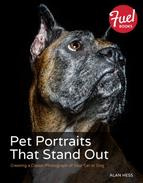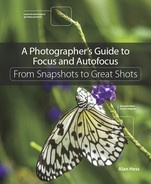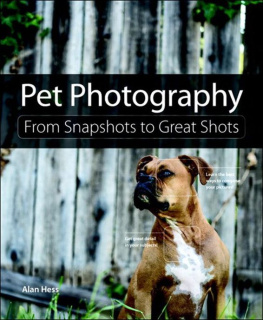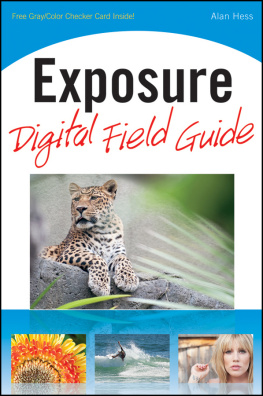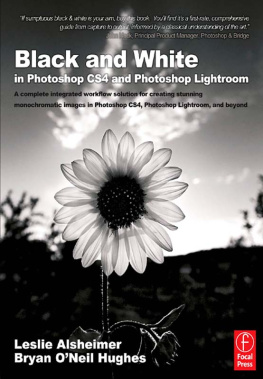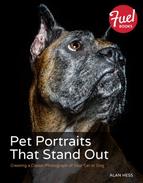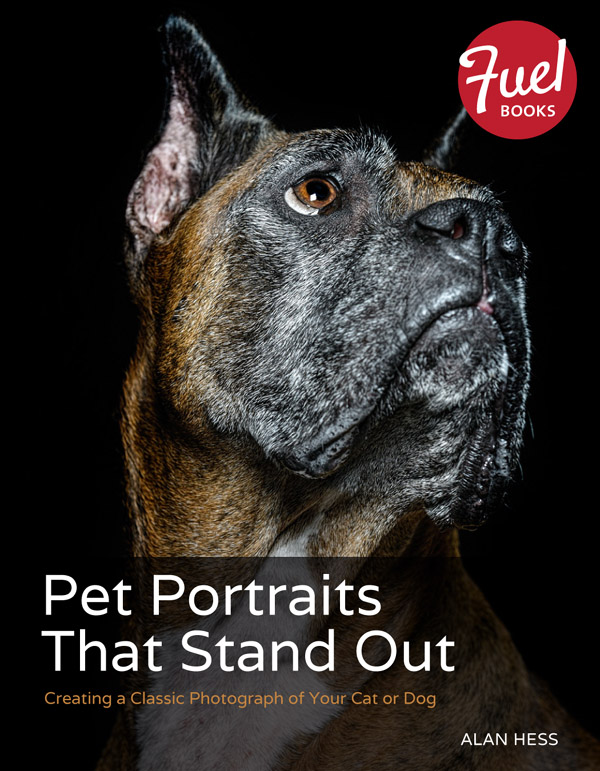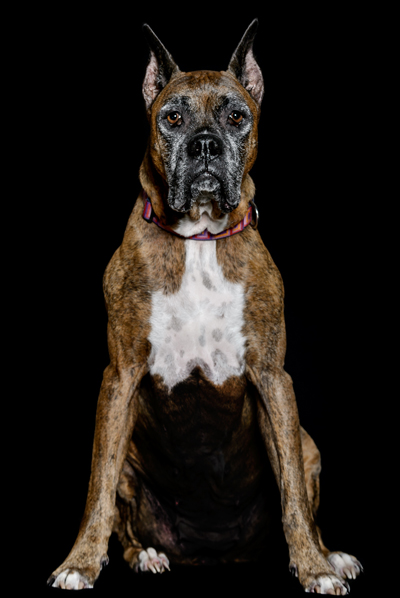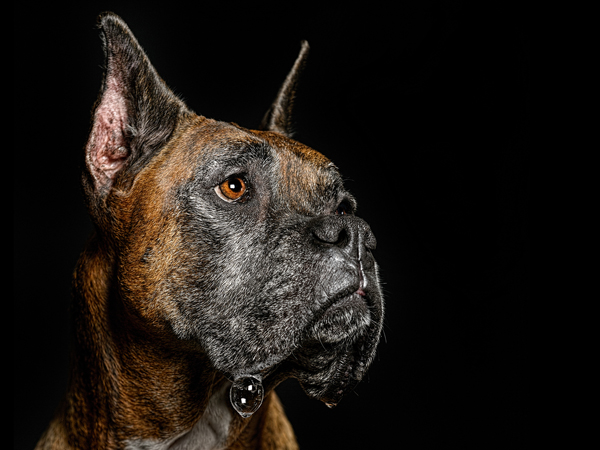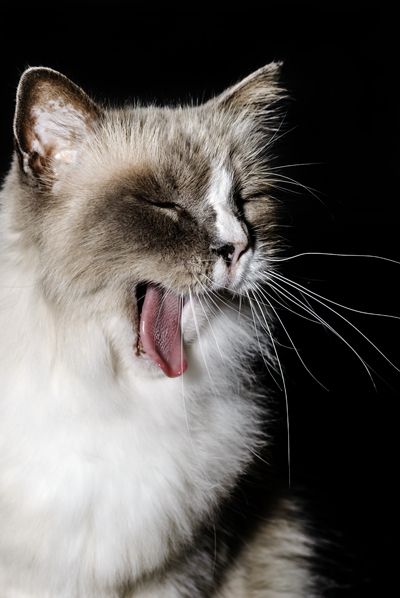Everyone loves photos of their pets, but getting good shots can be difficult. Usually, the biggest problem is getting your pet to pose for the photo. I know, that like my dogs, your pets are really well behaved and will do exactly what you tell themat least most of the time. But break out the camera and lights, and suddenly its play time! Or, they seem to develop a sudden unexplained case of stage fright.
The good news is that setup and 99% of the prep work can take place before your pet gets anywhere near the camera. That last 1%, however, will require your dog or cat to sit still for about 1/250 second. The easiest and most common way to get pets to sit in the right spot is to use a favorite treat or toy to hold their attention for a few moments. Always give them the treat after they have sat for a few seconds, so they know they will be rewarded for their behavior. Just have a little towel ready to wipe up any drool that may appear when your pet sees the treat.
Capturing a Pets Personality
Your pet has a distinct personality, and capturing that will make the image that much better. Right now, we have two dogs. Both are boxers, both were rescued, and both get the same amount of love and attentionbut they have very different personalities. That became clear to me when I started showing people photos of the younger one. People kept asking why he looked so serious. Its true, he does look a lot more serious than the older dog, and he is more serious than the older dog. He seems to question things more. Instead of running right into every situation with his tail wagging, he really seems to think about everything.
Watch for stress indicators, such as drooling or excessive yawning. Odessas drooling here, however, is just for showshe really likes her treats.
So whats the best way to capture the personality of your pet in this type of portrait? I believe it is to look for the small details, the way the eyes shine, the position of the ears, and the general demeanor of your pet.
TIP
The most important thing is not to force your pet to do anything he or she doesnt want to do. Just take it easy and your pet will, too.
Some things to look out for when your dog is getting stressed out:
Position of the head. A dog that is scared or just worried could turn his or her head away from the stressor, but the dog usually will try to keep an eye on the source of the stress at the same time. This means that, most likely, you will see the whites of the dogs eyes at the same time the head is turned away.
Drooling. Some dogs drool all the time. My older boxer is one of those; just say the word cookie and the drool starts up. But drool can also be a sign that a dog is getting stressed out. While a drooling dog photo might make for a fun keepsake, too much drool might just mean a stressed-out pet.
Shedding. Dogs shed when stressed. Just keep an eye out for how much the dog is shedding when posing. Lots of hair, even after a brushing, could mean that the dog is stressed while posing. This is a great reason to keep modeling sessions short.
Tight lipped. A tightly closed mouth is a sign of stress, and it makes for a miserable photo. You would rather have a shot of the dog looking happy with a slightly open mouth.
The key here is to just make sure your dog is happy when you take the portrait. Remember, you know your dog best, and you will know when it pays to just stop and try again later.
Cats are a lot harder to read than dogs, so take it easy when photographing your cat.
Cats are a little different and can be a real challenge to photograph in this way. Just be patient and have the shot set up and ready to go before placing your cat in the frame. A stressed-out cat will usually bolt and hide. The stress can also show up in other unwanted ways, especially around the litter box, so just take it easy and keep the whole thing stress free.
The Right Light
The sensor in your digital camera records the light that is reflected off the subject. The amount of light, the direction of the light, the color of the light, and how hard or soft the light is all play a part in how your subject is portrayed in each photo.

